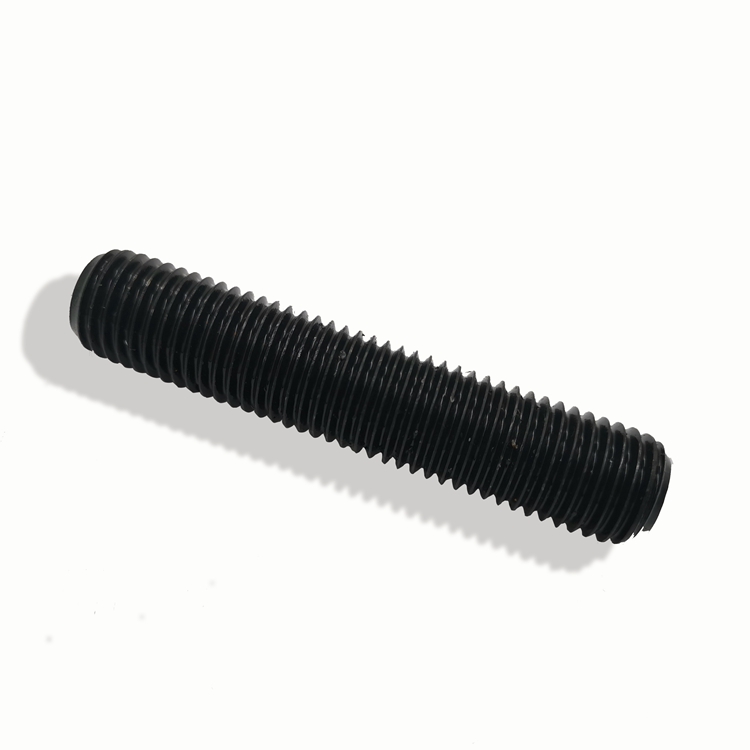Top Choices for Bolt Spacers in Various Applications and Projects
Dec . 12, 2024 17:44 Back to list
Top Choices for Bolt Spacers in Various Applications and Projects
The Best Spacer for Bolts Choosing the Right Solution for Your Project
When it comes to assembling various components in machinery and structural applications, the choice of spacers for bolts is critical. Spacers play a vital role in ensuring proper alignment, distributing loads evenly, and protecting sensitive materials from wear and tear. This article will explore the best types of spacers for bolts, highlighting their materials, applications, and important considerations to help you make an informed decision for your next project.
Understanding Spacers
Spacers are cylindrical or rectangular components that fill gaps between two or more items. In the context of bolts, they are used to create a specified distance between the bolt and the surface it is fastened to. This function is crucial for maintaining the integrity of the assembly by preventing over-tightening, which can lead to material deformation or breakage.
Spacers also serve various other purposes, such as providing insulation, reducing friction, and preventing corrosion. They are commonly made from different materials, including metal, plastic, rubber, and composite materials. The choice of material will significantly impact the spacer's effectiveness and durability.
Types of Spacers for Bolts
1. Washers - Flat Washers These are the most common type of spacer used with bolts. Flat washers distribute the load of the bolt over a larger area, preventing the bolt head or nut from digging into the material of the assembly. They come in various sizes and materials, including steel, stainless steel, and plastic. - Spring Washers Also known as lock washers, these are designed to prevent loosening from vibrations. They exert a force that counters the tendency of the bolt to unwind, making them ideal for applications subject to movement.
2. Sleeves - Sleeve spacers are tubular in shape and are used to create a gap between the bolt and the surface of the material. They work well in applications where a precise distance is required, such as in machinery assemblies.
3. Bushings - Bushings provide a smooth bearing surface to reduce friction and wear. They can also improve alignment and are commonly used in applications where the bolt must pass through a moving part.
4. Custom Spacers - For specialized applications, custom spacers can be manufactured to meet specific requirements. This may involve unique dimensions, materials, or shapes tailored to your project’s needs.
best spacer for bolts

Material Considerations
The choice of material for spacers can influence performance and longevity. Here are some common materials and their advantages
- Metal Steel and stainless steel spacers are strong and durable, making them suitable for heavy-duty applications. However, they may corrode if not properly coated or treated. - Plastic Nylon and polyethylene spacers are lightweight, resistant to corrosion, and ideal for applications where electrical insulation is necessary. They may not hold up as well under high-stress conditions compared to metals. - Rubber Rubber spacers are beneficial for dampening vibrations and providing a cushion between materials. They are often used in automotive and industrial applications. - Composite Materials These materials combine the benefits of various substances, offering a blend of strength, flexibility, and resistance to environmental factors.
Important Considerations
When selecting spacers for bolts, consider the following factors
- Load Requirements Assess the load the spacer needs to bear. Ensure that the chosen material can withstand the stress it will encounter. - Environmental Conditions Consider where the assembly will be used. High humidity, exposure to chemicals, or extreme temperatures may require specific materials to ensure longevity.
- Size and Fit It’s essential to ensure the spacer fits well with the bolt and the components it connects. A proper fit will minimize movement and enhance stability.
- Cost While it’s essential to choose the right material and type for optimum performance, always keep budget constraints in mind. Sometimes, a more expensive spacer may ultimately save costs in repairs and maintenance over time.
Conclusion
Choosing the best spacer for bolts requires a careful evaluation of your specific needs and the conditions under which the assembly will operate. Understanding the types of spacers available, the materials they are made from, and their intended purposes can significantly enhance the performance and durability of your projects. By considering all these aspects, you can ensure that your choice of spacers contributes to a more robust and reliable assembly.
Latest news
-
Reliable Wire Bolts Suppliers | Quality Zinc Plated Fasteners
NewsAug.26,2025
-
Wire Bolts Suppliers: Durable & Reliable Fasteners for Every Project
NewsAug.25,2025
-
Premium Cabinet Bolts Supplier | Wholesale & Custom Solutions
NewsAug.24,2025
-
Reliable Axle Nuts Supplier | Quality & Precision Fasteners
NewsAug.23,2025
-
Durable Bolts for Lawn Mower Handle - Top Supplier & Manufacturer
NewsAug.22,2025
-
High-Quality Bolts for Lawn Mower Handle Supplier & Manufacturer
NewsAug.21,2025
